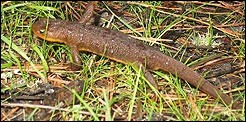Volunteers needed to protect plovers on HMB beaches
Volunteers make a difference. Along the San Mateo County coast, trained volunteers play a major role in protecting the Western Snowy Plover—a small shorebird that lays its eggs on the sand at a few California beaches every summer.
The snowy plovers, which are listed as threatened under the Endangered Species Act, may be found on several local beaches during the winter months. In the spring and summer, the plovers congregate on the few beaches that can provide safe nesting sites, including Half Moon Bay State Beach—a busy recreational beach where a protected habitat is set aside for the plovers to nest.
Volunteers in the Half Moon Bay State Beach Plover Watch program monitor the beach to help protect the plovers and point them out to beach visitors. Public education—sometimes including presentations for school groups—is an important part of the volunteer program.
Click below for details on volunteering.





